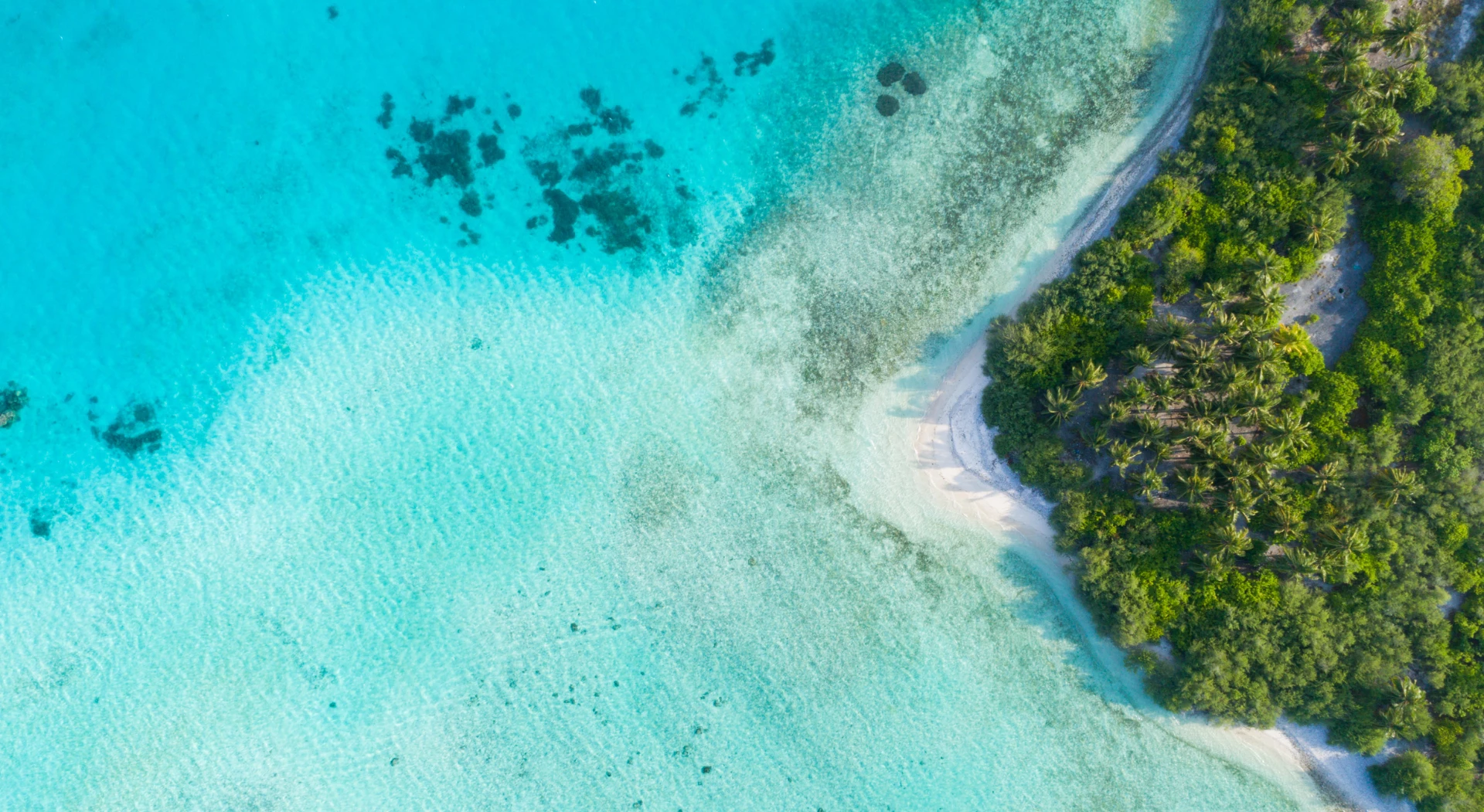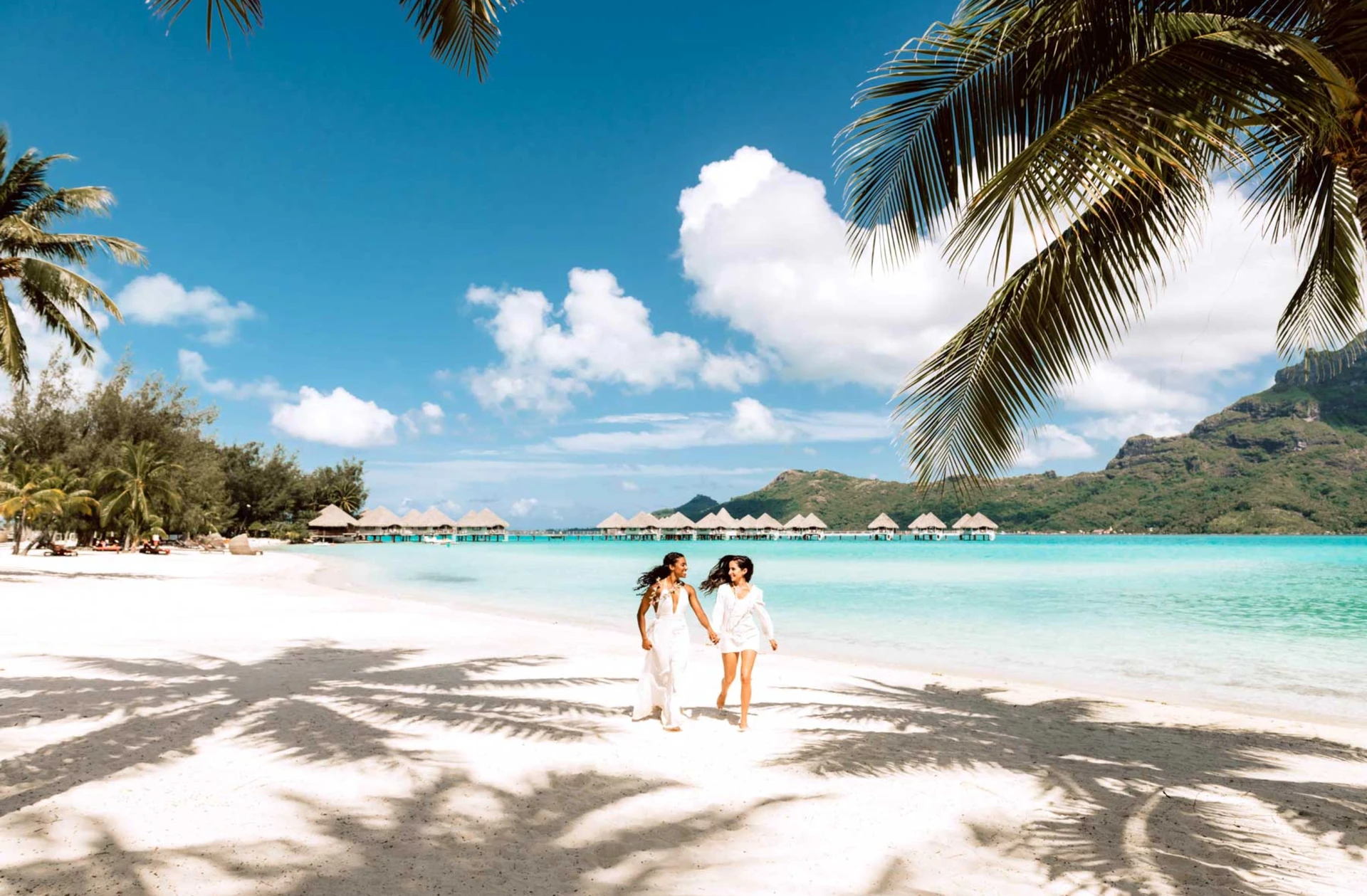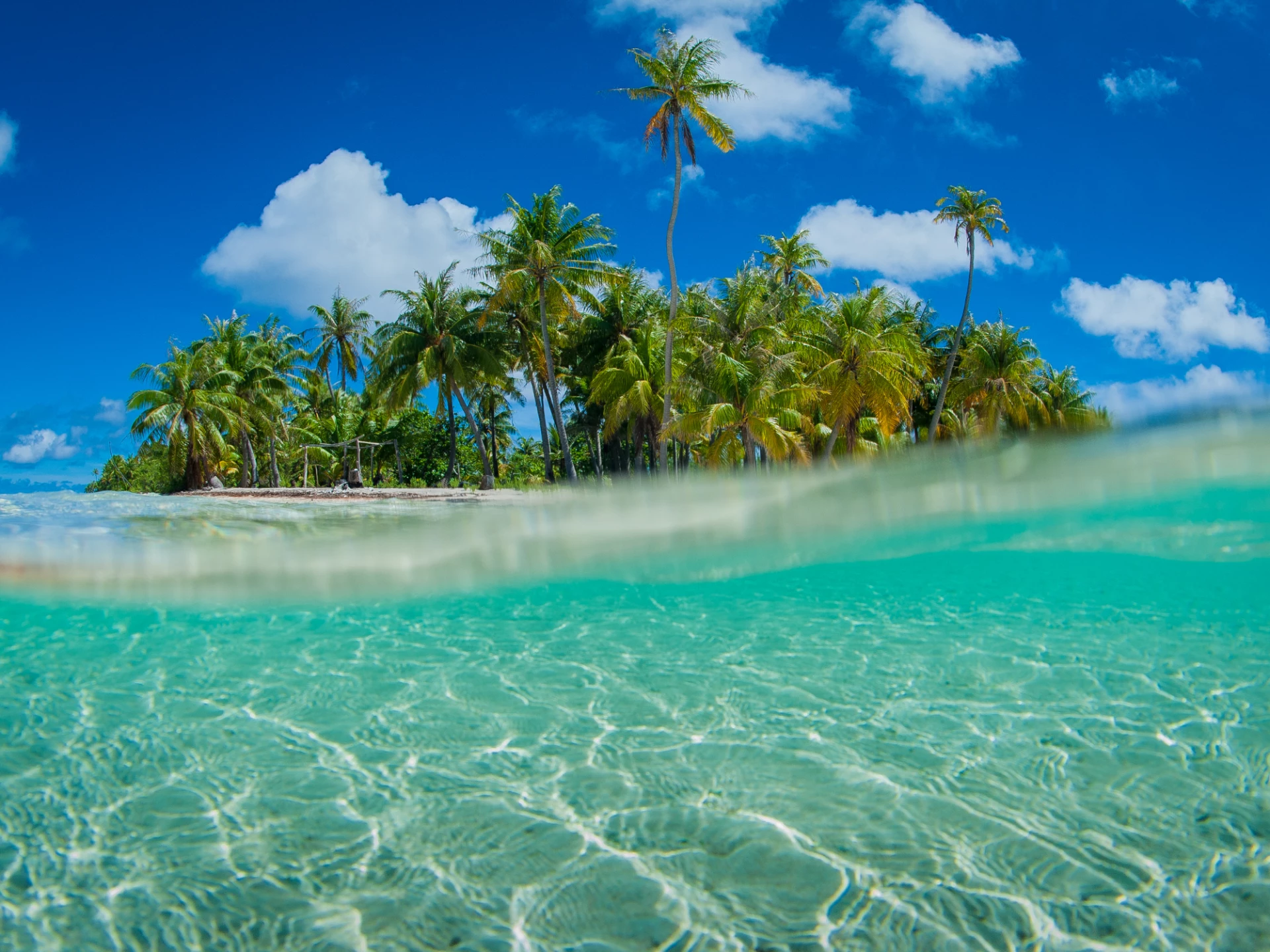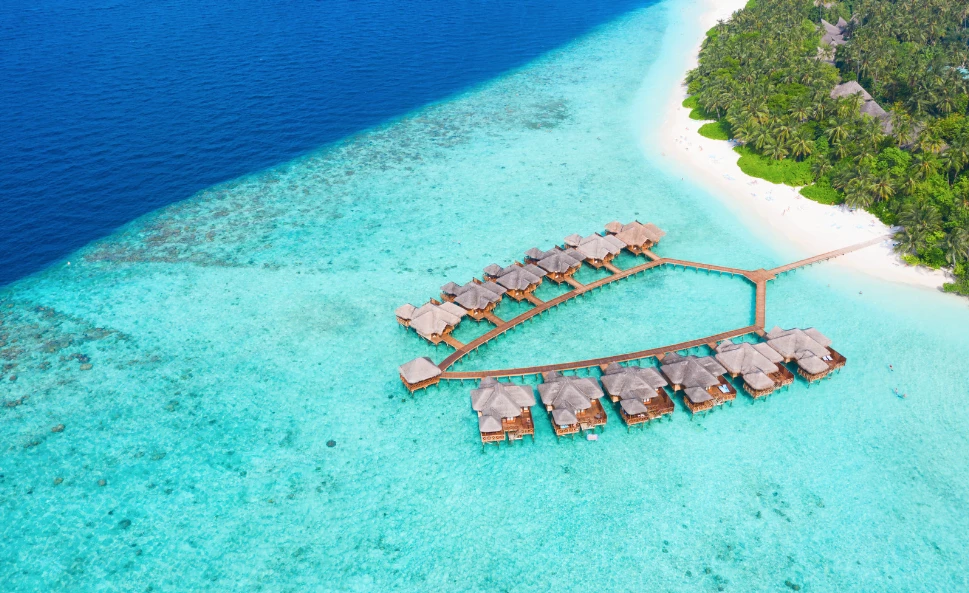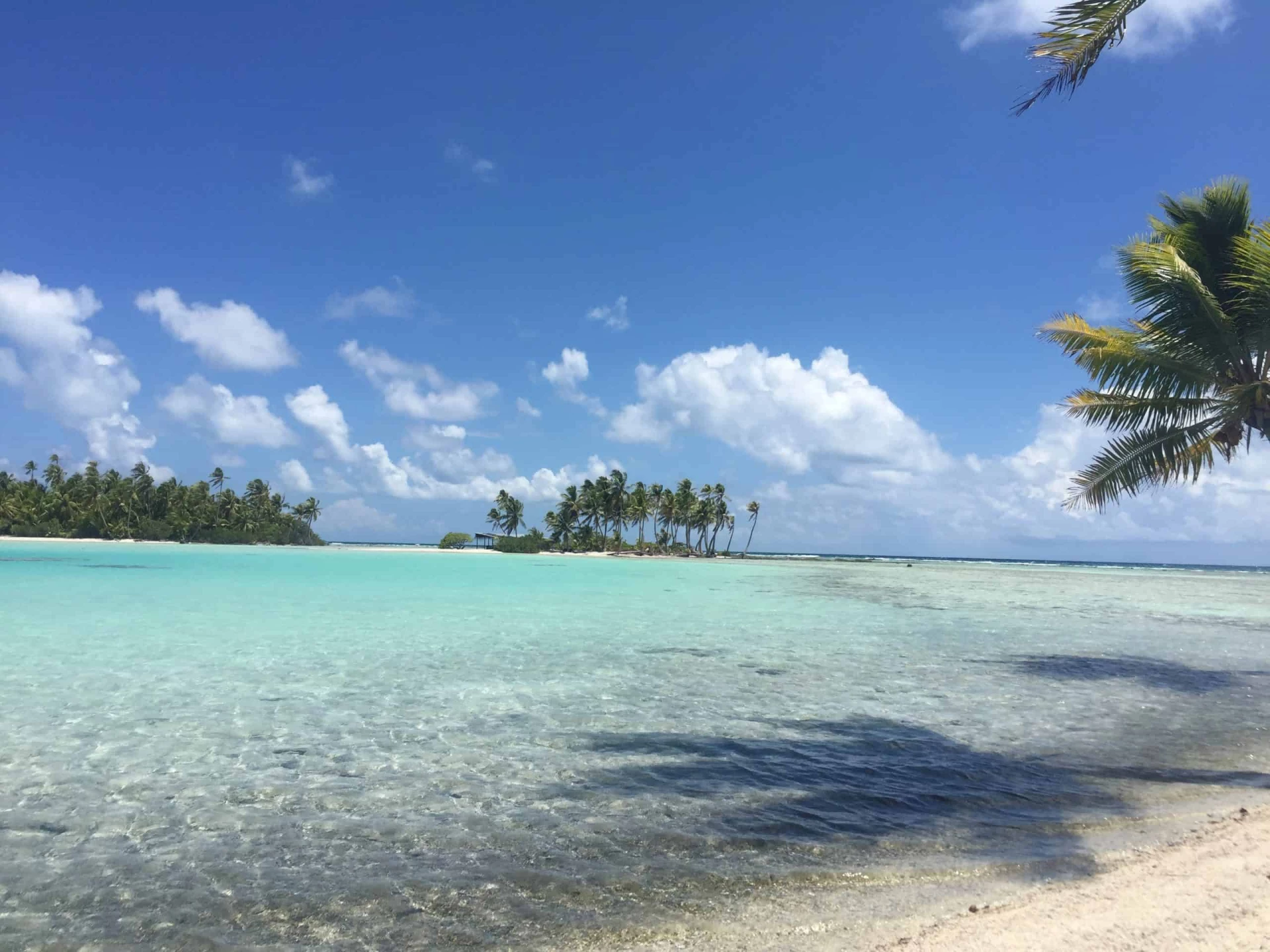Tahiti, nestled in the heart of French Polynesia, offers hiking experiences that cater to all, whether you’re an experienced trekker or new to the trail. The captivating terrain of this island serves as an ideal backdrop for immersive exploration on foot. With a range of trails accommodating diverse skill levels, a Tahitian hike becomes the perfect conduit to intimately connect with Mother Nature.
Where to go hiking in Tahiti?
The most difficult hike in Tahiti is Mt. Aorai. Reaching a height of 2,066 meters, Mt. Aorai ranks as Tahiti’s third-highest summit. The trail, well-marked and maintained, is navigable without a guide – we’d recommend one for your safety though, given the narrow ridge traverses. The lush, scenic path showcases captivating local flora and leads to panoramic vistas, deemed among the world’s finest.
For those traveling with family, the Papenoo Valley hosts some of Tahiti’s most sought-after hiking trails. Revealing a comprehensive snapshot of Tahiti’s terrain, this valley showcases magnificent waterfalls, ancient archaeological sites, verdant tropical foliage, and picturesque canyons. Notably, it houses the sole trek in Tahiti that leads to the volcanic crater of Mt. Orohena.
For those looking for an experience that’s not too easy and not too challenging, the Hitiaa lava tubes near Taravao present among the most extraordinary and exceptional hiking paths in Tahiti. Forged hundreds of thousands of years ago by swiftly cooling and hardening lava, these tubes provide a remarkable spelunking adventure. Explorers navigate darkness and swimming while traversing the cave system, with hidden pools, waterfalls, and lava formations to explore.
We Suggest...
Ultimate Luxury: French Polynesia
Tailor-MadeIf you’re looking for unbridled luxury in one of the planet’s most breathtaking tropical paradises, our Ultimate Luxury: French Polynesia itinerary is for you. A favorite amongst celebrities and the globe-trotting elite, French Polynesia is home to some of the...
When to go hiking in Tahiti?
It’s best to go hiking in Tahiti during the dry season, between May and October. These months bring reliably sunny and mild weather that’s ideal for outdoor exploring – you won’t need to worry about wet terrain or heavy clouds. You can also enjoy sunkissed landscapes, making the views twice as beautiful.
We recommend you avoid hiking around Tahiti during December to March. This is the rainy season, and strong winds and wet weather can spoil your experience, and be potentially dangerous.
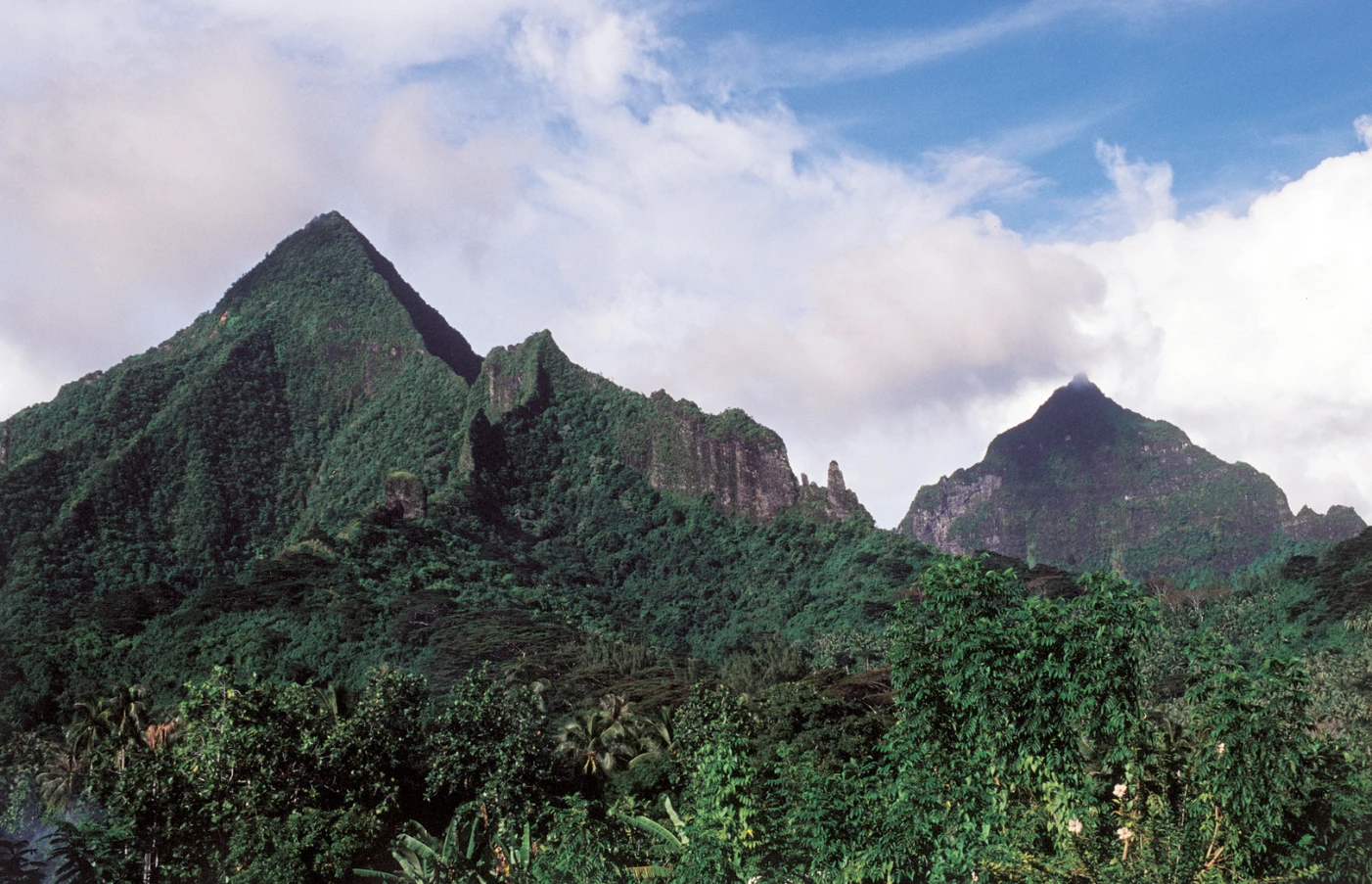
What to take hiking in Tahiti?
Being well-prepared for your outdoor escapades in Tahiti is paramount. Make sure you wear appropriate footwear, such as sturdy hiking boots or durable sneakers, and avoid sandals or flip-flops. Additionally, pack lightweight and comfortable attire suitable for the warm climate, along with essentials like a hat, sunscreen, and sunglasses. Equipping yourself with a small bag containing water, snacks, and basic first-aid supplies is crucial, as is carrying a map or GPS device.
Safety remains a top priority when hiking in Tahiti. Stick to designated trails and paths, and ensure someone is aware of your hiking route and expected return time, particularly if you’re venturing solo.
We Suggest...
Bora Bora Wedding
Tailor-MadeFor the perfect wedding, look no further than Bora Bora. The idyllic location is like no other when it comes to romance. Everyone is welcome to get married in French Polynesia and we’ll help ensure you get that perfect beach...
Hiking in Bora Bora
Bora Bora, nestled within the embrace of French Polynesia, has hiking opportunities for everyone, irrespective of whether you’re a seasoned expert or a complete novice. The spellbinding landscapes of this island create the perfect setting for on-foot exploration. Boasting trails that cater to various levels of expertize, a hike in Bora Bora gives you provides the ultimate avenue to engage with its mesmerizing and distinct surroundings.
Where to go hiking in Bora Bora?
Mount Pahia is the tallest accessible mountain in Bora Bora for hikers. You can climb to the top for stunning views of the Bora Bora lagoon and Mount Otemanu. The hike is challenging with switchbacks, scramble, and vertical climbing, so we’d recommend hiring a guide. You can attempt the climb on your own, but expect to get lost a few times.
Those with more experience may want to challenge themselves to an ascent up Mount Otemanu. There’s a cave that forms the mountain’s highest accessible point, but it can only be reached by seasoned hikers, since it features extremely steep sections that can only be passed by pulling yourself up with ropes. This hike must be completed with a guide, as it passes through private land where certain permissions are required.
Matu Pupu is another popular hike, and offers some great views of the luxurious resorts of Bora Bora. This moderately difficult hike features a ridge at the top that it’s possible to walk across, which provides some particularly picturesque views. The trail has many landmarks along the way, making it a fascinating hike from start to finish.
You may have heard of the famous Faanui guns from WWII that still reside on the northwestern edge of the island. These are worth visiting – and the hike to get to them is one of the shortest and easiest on the island. You will go over some steep terrain, but if you’re in the right shoes, it’s easy to traverse. It’s also one of the hikes that you can do without a guide – the route is easy to follow on Google Maps.
We Suggest...
Ultimate Luxury: French Polynesia
Tailor-MadeIf you’re looking for unbridled luxury in one of the planet’s most breathtaking tropical paradises, our Ultimate Luxury: French Polynesia itinerary is for you. A favorite amongst celebrities and the globe-trotting elite, French Polynesia is home to some of the...
When to go hiking in Bora Bora?
It’s best to go hiking in Bora Bora during the dry season, between May and October. These months bring reliably sunny and mild weather that’s ideal for outdoor exploring – you won’t need to worry about wet terrain or heavy clouds. You can also enjoy sunkissed landscapes, making the views twice as beautiful.
We recommend you avoid hiking around Bora Bora during December to March. This is the rainy season, and strong winds and wet weather can spoil your experience, and be potentially dangerous.
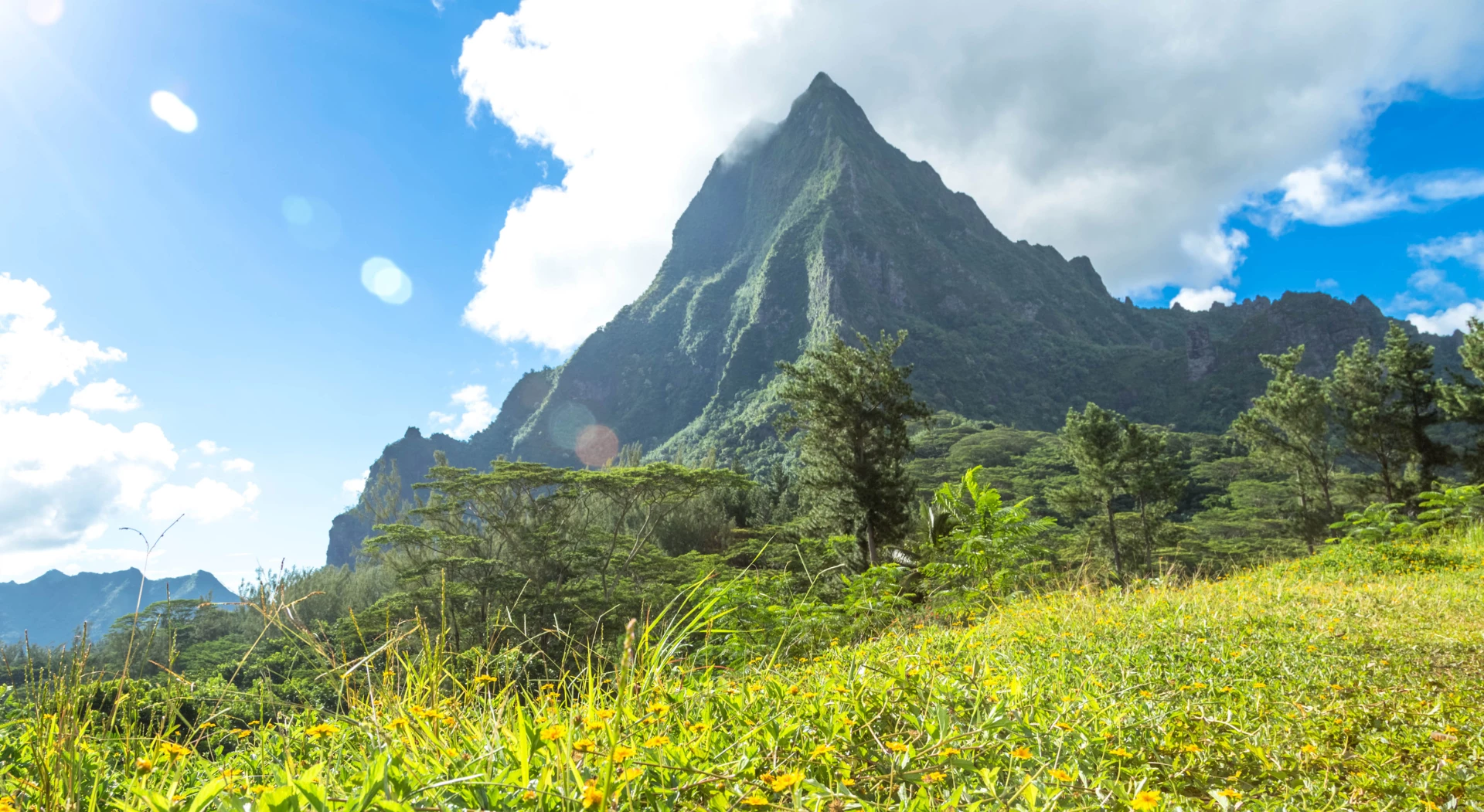
What to take hiking in Bora Bora?
It’s important to be appropriately equipped for your outdoor adventure in Bora Bora. Ensure you have good footwear – hiking boots or durable sneakers, definitely no sandals or flip flops. Make sure you also bring comfortable clothing that’s suited for the hot climate, as well as a hat, sunscreen and sunglasses. A small bag with water, snacks and first-aid essentials is vital, as well as a map or GPS device.
It’s also important that you stay safe when hiking in Bora Bora. Stay on designated paths, and let someone know your hiking route and when they can expect you home if you’re going by yourself.
We Suggest...
Bora Bora Wedding
Tailor-MadeFor the perfect wedding, look no further than Bora Bora. The idyllic location is like no other when it comes to romance. Everyone is welcome to get married in French Polynesia and we’ll help ensure you get that perfect beach...
Watersports in Bora Bora
A utopia for water lovers, Bora Bora features breathtaking ocean views, diverse marine life and warm, clear waters that invite you to paddle, swim and float. Those who love snorkeling, diving, surfing and kayaking will fall in love with this paradise island. Snorkel amidst vibrant coral reefs, explore the depths on diving adventures, ride the surf or glide on a SUP. On this gorgeous island, you’ll enjoy an aquatic odyssey like no other.
Surfing in Bora Bora
Surfers worldwide flock to Bora Bora in French Polynesia for its outstanding beaches and exhilarating waves. An exquisite blend of powder-white sand, warm waters and impressive swells offers an exciting surfing experience.
Experienced surfers especially appreciate Teavanui Pass. This renowned surf spot sits on the island of Bora Bora, within French Polynesia, and is famous for its massive barrels and powerful waves which provide an unforgettable ride. This one is for experienced surfers only.
We’d also recommend you check out Motu Piti Aau – although this is a less reliable spot for surfing than Teavanui Pass, it offers opportunities to surf from November to March, during the island’s wet season. Surfers should exercise caution however as this is during cyclone season, where strong winds and large waves can be risky. It’s also a challenging spot, so again, it’s better for experienced wave riders.
The best surfing conditions on the rest of the island occur from May to October when the swell direction changes. It’s important to research the ideal swell direction for each spot before heading out into the water.
We Suggest...
Off The Beaten Track
Tailor-MadeExplore the uncharted splendors of French Polynesia with a unique luxury vacation that takes you beyond the usual tourist trails to some of the most secluded and enchanting islands in the South Pacific. This exclusive itinerary is specially curated for...
Diving in Bora Bora
If you want to catch a glimpse of majestic manta rays and impressive sharks, then diving in Bora Bora is a must. On each dive, you’re treated to a symphony of vibrant hard and soft corals, bustling with an array of reef fish. The allure of exploring the waters within the world’s most exquisite lagoon is a must for many divers.
The island’s unique volcanic shaping has bestowed Bora Bora with a serene, translucent lagoon, that sits bordered islets and a coral reef, punctuated by a single pass leading to the deep blue embrace of the Pacific Ocean. Yet, it’s the sheer abundance and diversity of marine life that steals the limelight in Bora Bora’s underwater realm. Eagle rays, stingrays, bat rays and leopard rays can all be seen, as well as black tip reef sharks, lemon sharks, gray sharks, white tip sharks and hammerhead sharks. Humpback whales have even been spotted in these waters from late July to November.
Numerous established dive sites grace Bora Bora’s waters, catering to divers of all proficiency levels. The inner tranquility of the lagoon is perfect for beginners, while those seeking a challenge will find more intricate dives beyond the protective reef.
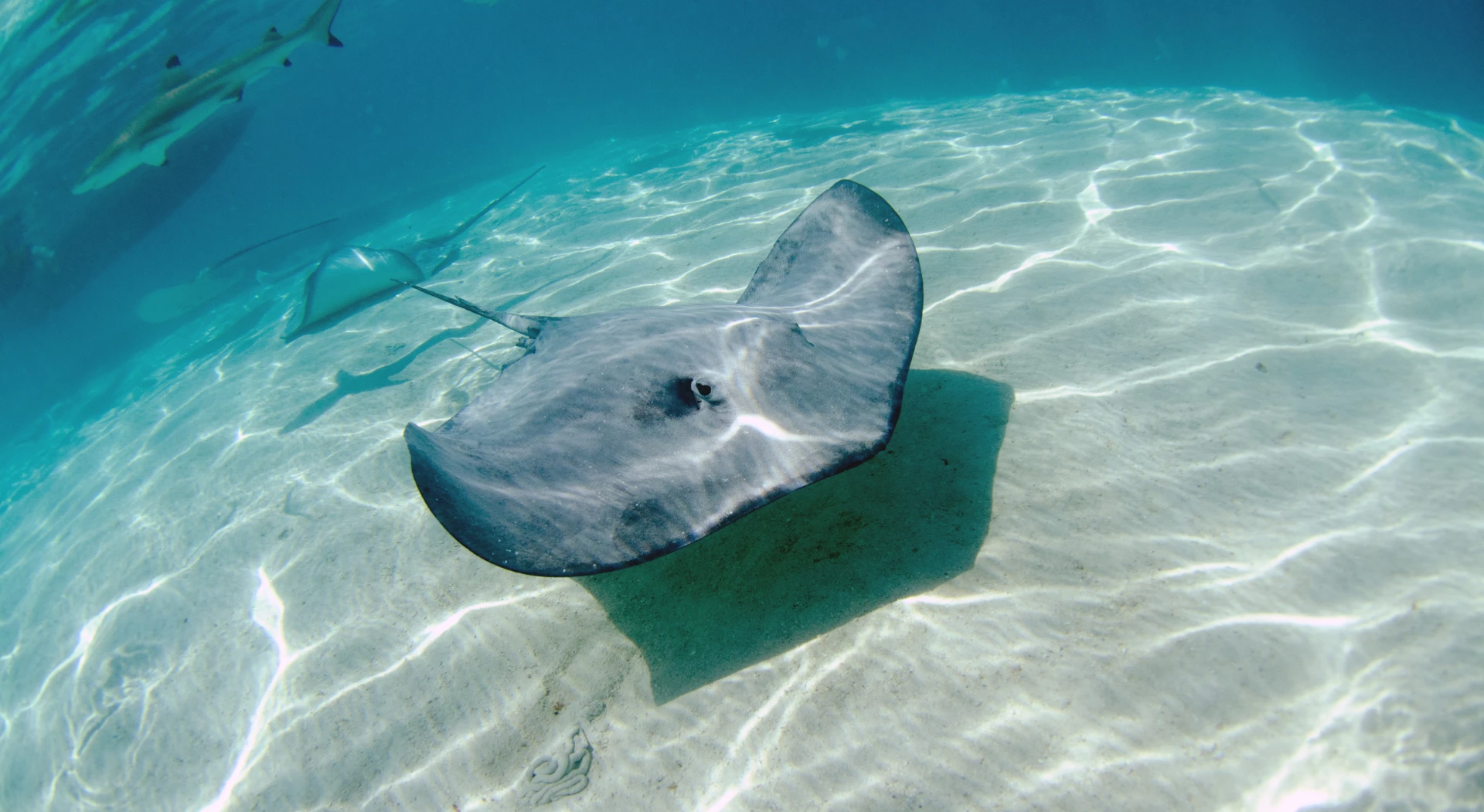
Sailing in Bora Bora
Embark on an exquisite sailing journey around Bora Bora and find beautiful views and landscapes along the way. Bora Bora offers a range of experiences for both experienced and beginner sailors. Flit around picture-perfect islands, jump off for a swim in crystal-clear turquoise bays, and get up close and personal with marine life.
Stop off on tiny islands and find remote villages and quaint beachside spots. Float over tranquil lagoons and past idyllic beaches. Your sailing journey is sure to be magical and memorable in equal measure.
When planning a sailing sojourn in this region, the prime months for weather span from May to October. During this period, the trade winds ensure a steady and dependable sailing environment. Nonetheless, it’s advised to acquaint yourself with the average weather patterns for when you plan to go, so you can optimize your voyage and steer clear of any inclement conditions.
We Suggest...
Premium Overwater Villa Experience
Tailor-MadePicture yourself waking up in paradise, stepping out onto your overwater deck, and gazing out over the turquoise water before plunging in… French Polynesia is renowned for its overwater bungalows, and this itinerary encompasses three stunning properties. You will be...
The Maldives or Bora Bora – which is better?
It’s a question we get asked on an almost daily basis by our clients. And it’s a tough call. But when you’re planning a vacation to the Maldives or a Bora Bora vacation, it’s important you choose the one that is best suited to you.
Both Bora Bora and the Maldives are renowned for their iconic water bungalows, but there are some key differences that you should bear in mind if you are considering whether to head to the South Pacific or the Indian Ocean for the best water bungalow holiday.
Accessibility
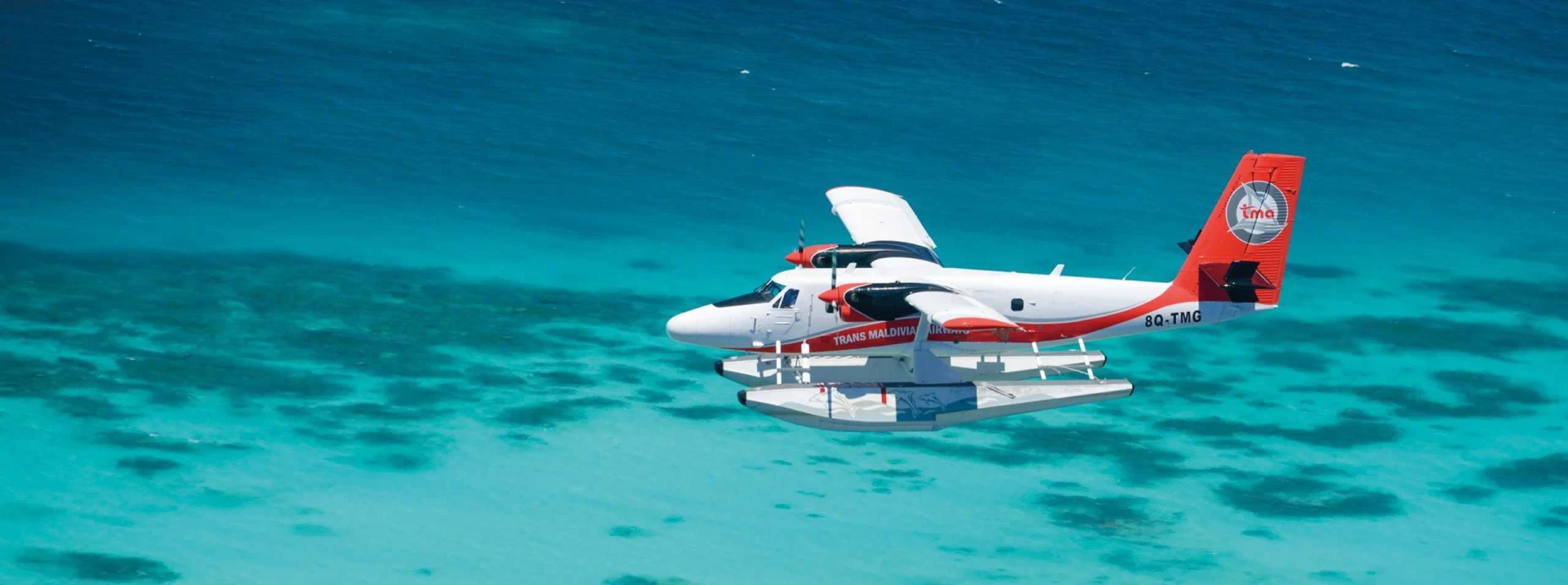
Read more: Seaplanes in the Maldives
The first thing to bear in mind is where you are travelling from. The Maldives is more readily accessible from Europe than Bora Bora is, but if you are based in the United States then Bora Bora is by far the best option.
The travel time to the Maldives from London is around 10 hours on a direct flight. Of course, lots of people pair Sri Lanka and the Maldives and so will fly via Colombo. Contrast this with the flight time to Bora Bora from London which can be anything upwards of 24 hours. From London to Bora Bora involves flying via Los Angeles, then onward to Tahiti before finally getting a short flight to Bora Bora.
The travel time to Bora Bora from the USA is around 10 hours – nine to get from Los Angeles to Papeete and then the onward flight to Bora Bora. Compare this with the flight time from the USA to the Maldives which is at least 27 hours. From LAX, you take a 16-hour flight to Dubai where you will change for an onward flight to the Maldives.
So if it’s accessibility you’re thinking about then the Maldives is easier to get to from Europe and the best option is a vacation in Bora Bora in a water bungalow from the United States.
The Islands
Bora Bora is part of French Polynesia. Many of our clients will pair Bora Bora with another island in the area. Renowned for its coral-fringed lagoons, we often recommend that pairing Bora Bora with Moorea and Tahiti is an ideal combination. The properties on Tahiti tend to not be quite as luxurious as those on Bora Bora.
Scuba diving in Bora Bora is perhaps some of the best in the world and it also has at its heart Mount Otemanu, a dormant volcano. Bora Bora is different from the Maldives in that it’s one island with multiple resorts. It means that although you are staying at one property, you can explore the island further, visiting other properties and dining elsewhere. You can be quite active in Bora Bora, discovering the island on a guided hike or a safari by jeep. Bora Bora water sports are popular too – jetskiing, paddle boarding, fishing, snorkelling and diving are all available and for those feeling that little bit more adventurous then you can turn your hand to shark feeding or swimming with stingray. Read more on why you should visit French Polynesia.
We Suggest...
French Polynesia: The Out Of Office Collection
Tailor-MadeFrench Polynesia is a French overseas territory comprised of just over 100 islands. It’s a tropical paradise and one of the top luxury destinations on earth. The first European travelers believed they’d stumbled upon something resembling heaven on earth. Marlon...
When it comes to the Maldives, you’ll be spoilt for choice. With over 1,000 coral islands, the country is made up of 26 distinct atolls – which are rings of coral islands. For that private island feel then the Maldives is probably the ticket. Most Maldives resorts are based on their own individual island, each complete with their own iconic beaches. You don’t have to go very far in the Maldives to find that beautiful sandy beach you’ve seen in the brochures.
Switching off and doing nothing is one of the most popular choices for clients travelling to the Maldives. You could quite easily be lying on the beach at your resort and not see another soul for an hour. Most resorts have multiple beaches and private areas. When thinking about things to do in the Maldives, dolphin watching, scuba diving and other water sports are popular choices. And then it is said that scuba diving in the Maldives is perhaps some of the best on earth – but then we said that about Bora Bora too!
If scenery is on your wish list then you may wish to consider that Bora Bora has its mountain at its centre so you will find jagged rocks and a stunning view. In the Maldives, the low lying islands mean that there’s little scenery or forests to explore.
The Accommodation
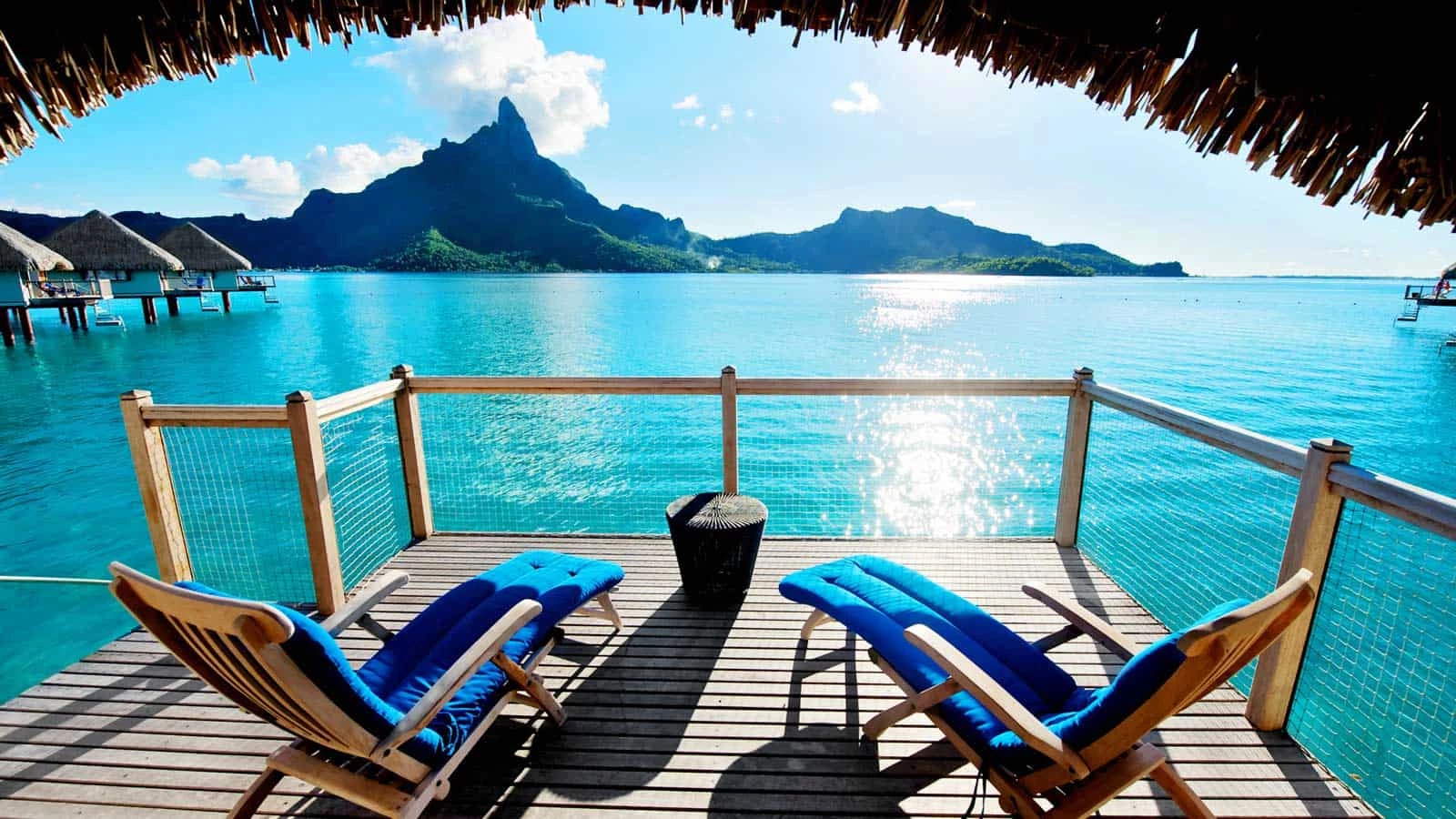
An overwater bungalow at Le Meridien in Bora Bora
In both Bora Bora and the Maldives, overwater bungalows are the dream. They understandably come with a price tag but to travel to either of these destinations and not experience that dream would be a shame. We often recommend to our clients travelling to the Maldives or Bora Bora that you should combine room categories.
For example, if travelling for seven nights we’d suggest staying five in a beach room before spending a further two in an overwater bungalow. Clearly if your idea of luxury is nothing but an overwater bungalow in the Maldives or an overwater bungalow in Bora Bora then you should absolutely stick to that dream. It’s often very hard to book multiple room categories online and so that’s where we can take care of those arrangements.
Both Bora Bora and the Maldives involve further travel from the international airport. In the Maldives you’ll take a seaplane or a speed boat to your chosen resort. In French Polynesia you’ll need to fly from Papeete Airport in Tahiti to Bora Bora on a short domestic flight with the local airline, Air Tahiti Nui.
In Bora Bora, the influence is French and so you’ll find lovely cuisine and restaurants. In the Maldives, the cuisine is varied but expect to find an Indian and Asian influence.
When it comes to privacy, you may find that the Maldives offers slightly more – this is based on the fact that each resort is fairly isolated but also that the properties have been built with privacy in mind.
The construction of overwater bungalows in the Maldives compared to Bora Bora is different too. In the Maldives, you’ll find more modern design whilst in Bora Bora the authenticity and rustic tradition is front and centre.
We Suggest...
The Maldives: The Out Of Office Collection
Tailor-MadeHere’s our guide to the best hotels, experiences and resorts in the Maldives. A very special collection of tropical islands, it’s no wonder that the stunning Maldives are one of our most popular destinations. Considered to be one of the...
Gay Friendliness
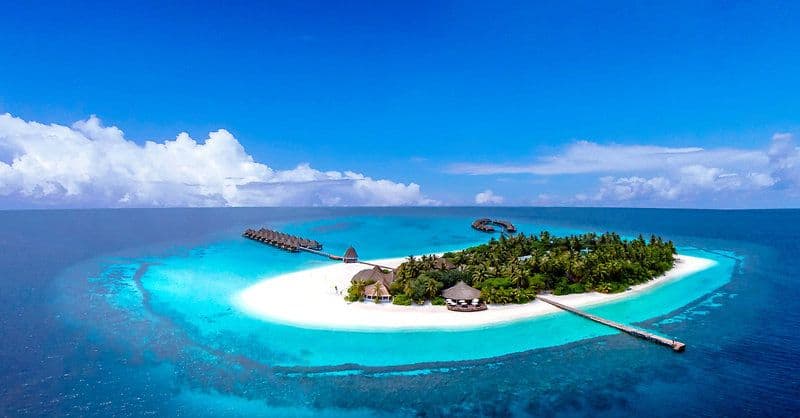
Angaga Island in the Maldives
View Our Top Luxury Maldives Hotels
At OutOfOffice.com, we’ve successfully sent LGBT clients to both resorts. When it comes to choosing a destination based solely on its gay friendliness then Bora Bora and French Polynesia win hands down.
That’s because the LGBT laws in Bora Bora are much more relaxed than the very strict laws in the Maldives. Same-sex couples can get married in French Polynesia and also have a wonderful beach ceremony – the actual marriage takes place at the City hall, but you can finish off the nuptials with a traditional Polynesian ceremony complete with leis on the beach.
In terms of checking into resorts, you’ll have no problems enjoying a gay honeymoon in Bora Bora. The laws are favourable and gay marriage has been legal in Bora Bora and its neighbouring islands since 2013.
The Maldives are slightly trickier in terms of being gay-friendly, but that shouldn’t deter you. It’s illegal to be gay in the Maldives, but the reality is different. All the resorts we work with in the Maldives offer honeymoon benefits to same-sex couples. There may be hints of ignorance amongst some of the resorts’ workers, but it is not usually in any way malicious. The worst report we’ve had from gay couples travelling to the Maldives is that their beds were regularly separated by a maid – again not because she had an issue with the couple, simply because she was ignorant and doing what she believed her job was which was to reset the room.
We understand that some clients do not wish to travel to a destination where it’s illegal to be gay or lesbian and so in those cases we would say that Bora Bora and French Polynesia is your best option. But for those of you who are willing to travel to destinations where the law and the reality are slightly ambiguous then the Maldives is a great option.
No matter which destination you choose to travel to, both the Maldives and Bora Bora really are bucket list experiences and our team are on hand to help you choose the best one based on your own personal requirements.
We believe in opening the world to all and have successfully sent thousands of couples on trips to both destinations. Have a read of our Trustpilot reviews and then get in touch with one of our Maldives or Bora Bora luxury travel experts today.
An Island Guide To RangiroaWhen you think of French Polynesia the islands of Moorea and Bora Bora instantly spring to mind. There are, however, many other fascinating destinations to explore. French Polynesia is made up of five island groups stretched out over the Pacific and it’s as big as Western Europe.
I was fortunate enough to explore several islands in French Polynesia. The hidden gem for me would have to be Rangiroa, a Robinson Crusoe hideaway nestled among the Tuamotu island group.
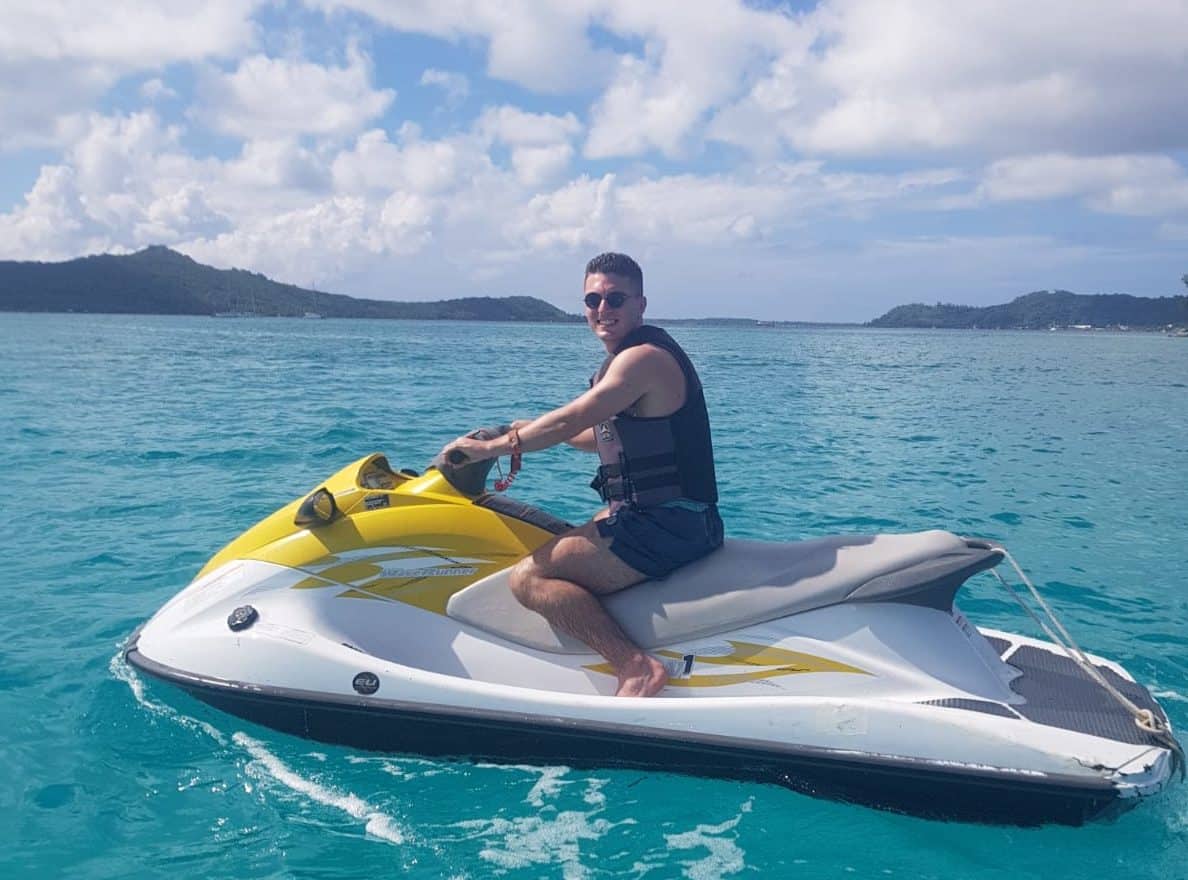
Diving In Rangiroa
Rangiroa is renowned worldwide for its breathtaking dive spots. As you explore the lagoon, passes and reefs you’ll be blown away by the abundance and colours of the marine wildlife. Visibility in unbeatable in Rangiroa. You’re allowed to dive deeper here than in any other dive spot in the world. Keep an eye peeled for hammerhead sharks, eagle rays, manta rays and dolphins.
Dives can be arranged locally with ease. There are two main dive locations, the first being The Tiputa Pass. This dive site offers the potential to witness Manta rays, dolphins, tropical fish and sharks.
The Garuae Pass is a designated UNESCO Biosphere Reserve. It’s the holy grail of dive sites on Fakarava. The drift dive takes experienced divers through the pass at a serious depth past large schools of shark and myriads of fish.
This pass was first crossed in 1888 by R.L. Stevenson, the celebrated author “Treasure Island” and “Strange Case of Dr Jekyll and Mr Hyde”.
Snorkelling on Rangiroa can be done almost anywhere. My personal favourite spots were the beach by our hotel and by the overwater bungalow I stayed in. The coral is healthy and visibility is incredible!
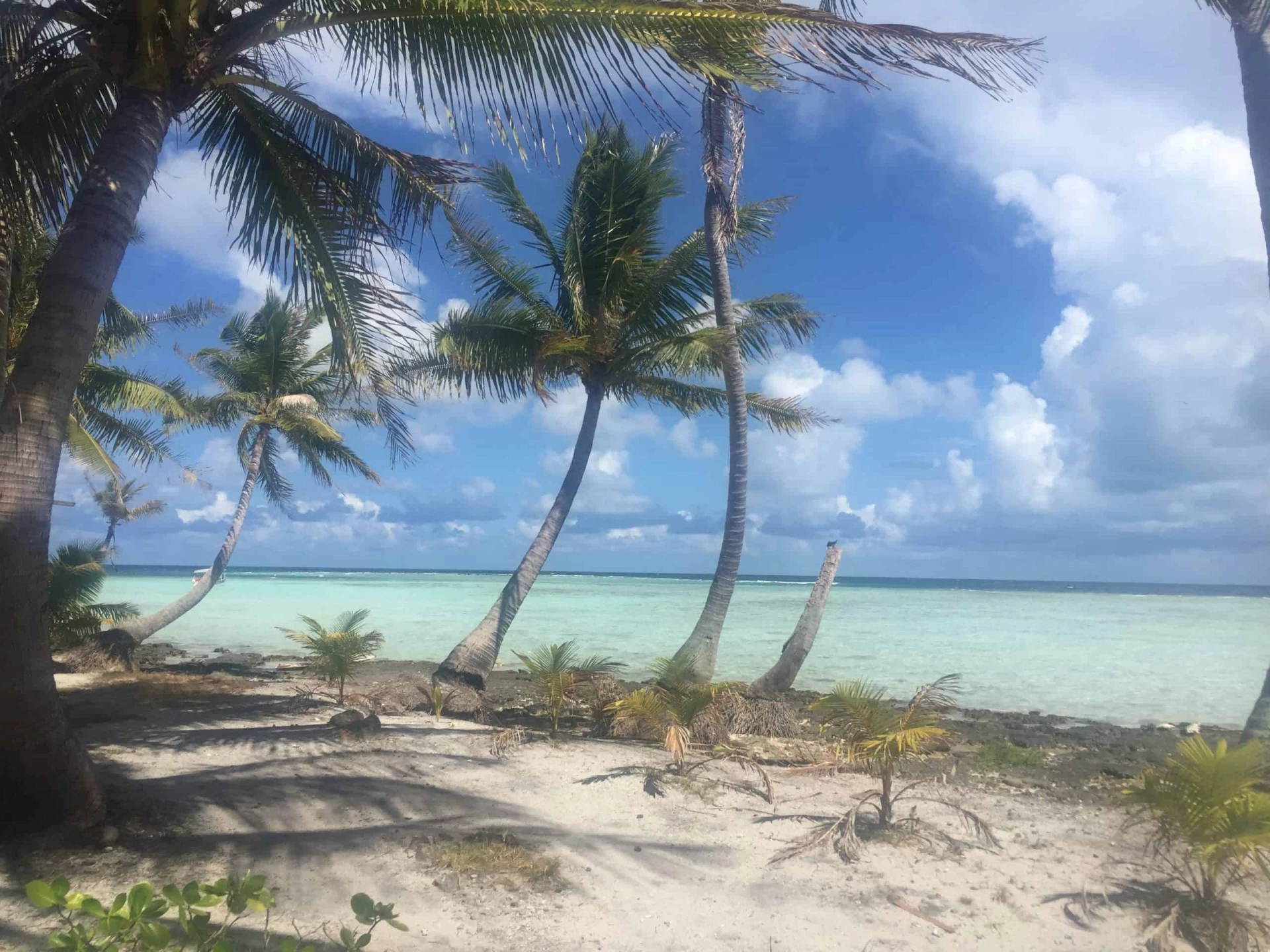
How To Get To Rangiroa
Rangiroa is easy to access via an internal flight from Tahiti which will take around an hour. If you’re intending to go island hopping in French Polynesia, you can get an Air Tahiti Pass. You can also sail to Rangiroa but you’ll have to brave a cargo ship! We’d certainly recommend flying to Rangiroa.
What Makes Rangiroa different from Tahiti and Bora Bora?
There aren’t many hotels on the island, with the Kia Ora hotel being the only 4* property. One of the world’s largest atolls, Rangiroa has two major villages, Tiputa and Avatoru. Both are well worth visiting for an authentic taste of French Polynesia culture. Wine lovers will do well here as Rangiroa is the main wine producing area. Sample some of French Polynesia’s finest at the Dominique Auroy Estate. You can also visit black pearl farms along the lagoon.
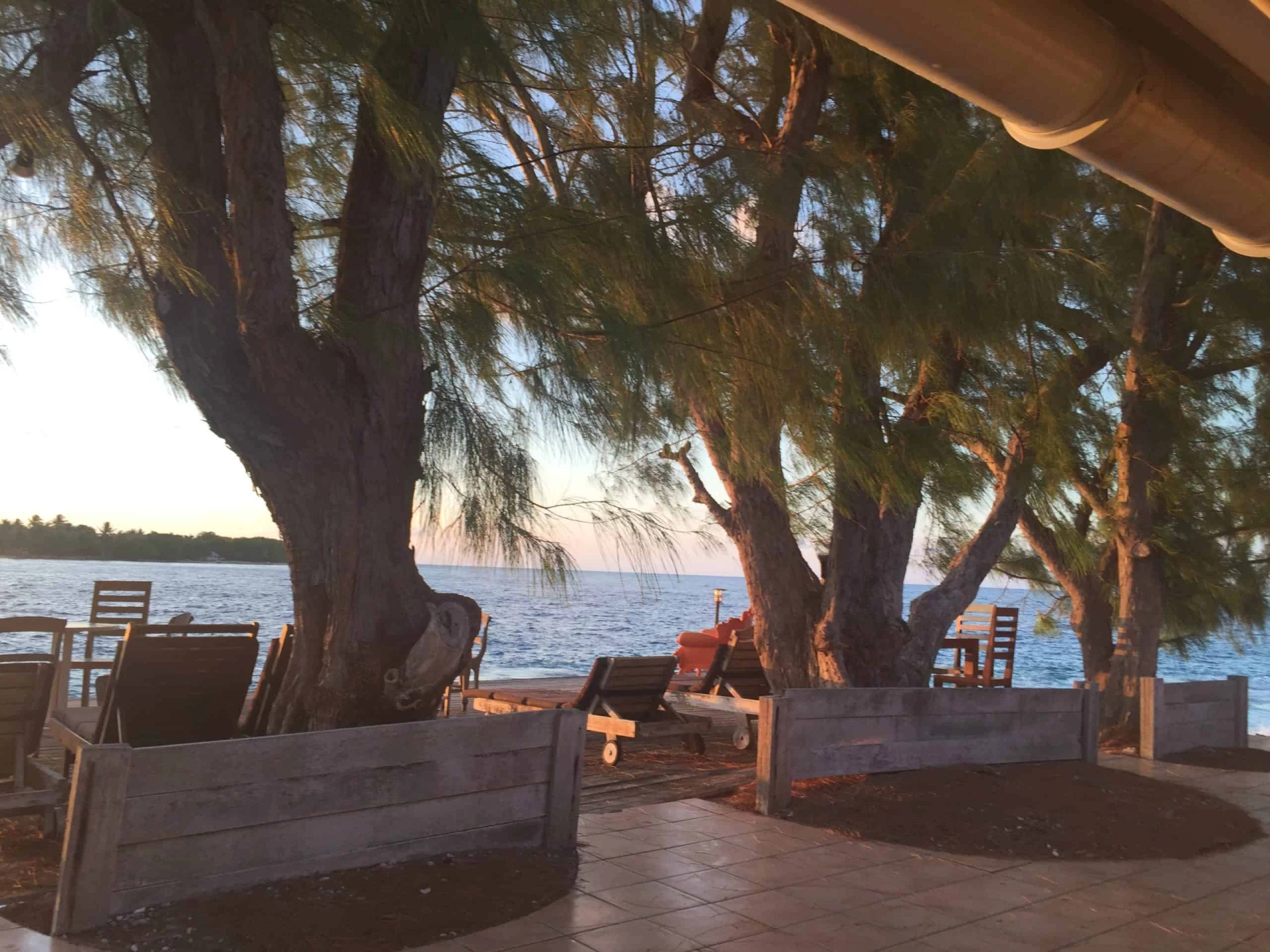
Things To Do In Rangiroa
The Blue Lagoon Day Excursion
This was one of the personal highlights of my trip. You’ll travel to a secluded lagoon full of tropical fish and even black finned sharks. It’s a lagoon within a lagoon with some of the clearest water I have ever seen! One of the biggest shocks was the number of sharks just outside of the lagoons. Don’t worry, your guide will make you feel at ease and invite you in – if you’re brave enough!
Swimming with sharks was an unforgettable experience. Seeing these animals in the flesh is incredible, as is the fact that I didn’t get eaten.
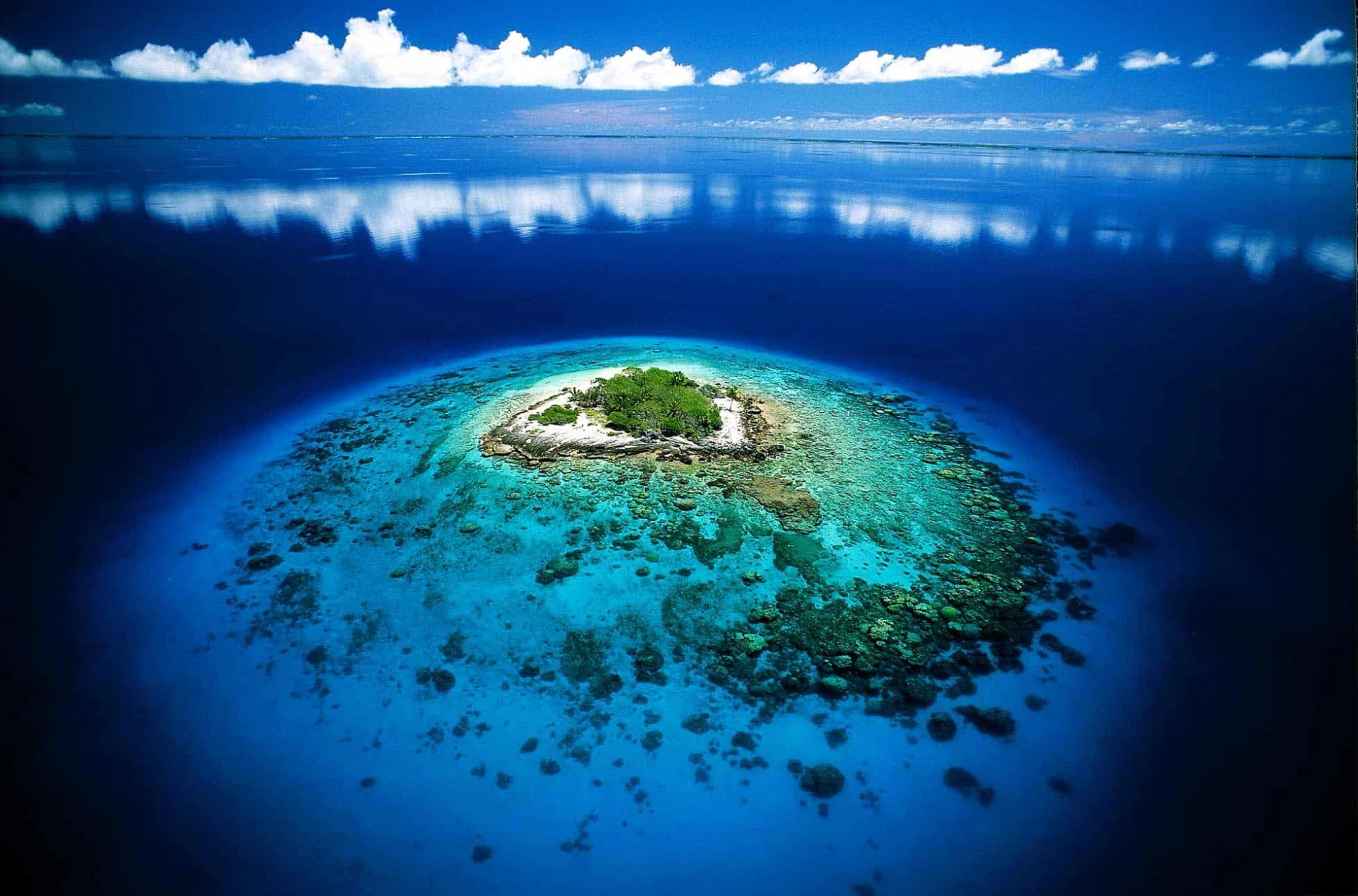
Hotels on Rangiroa
Accommodation options are more limited compared to the more iconic islands such as Bora Bora and Moorea. Most of the hotels are lodges, usually 3*, and by no means as breathtaking as those in Bora Bora. There’s one luxury hotel in Rangiroa called Hotel Kia Ora Resort & Spa. It has an onsite diving centre and a concierge desk to organise all your activities. You can also stay in one of French Polynesia’s famous overwater bungalows.
Kia Ora is known as the best hotel in Rangiroa and I totally recommend it! I stayed in a beautiful beach bungalow that had a private swimming pool surrounded by coconut trees. You can also opt for bungalows on the water (but they are much smaller).
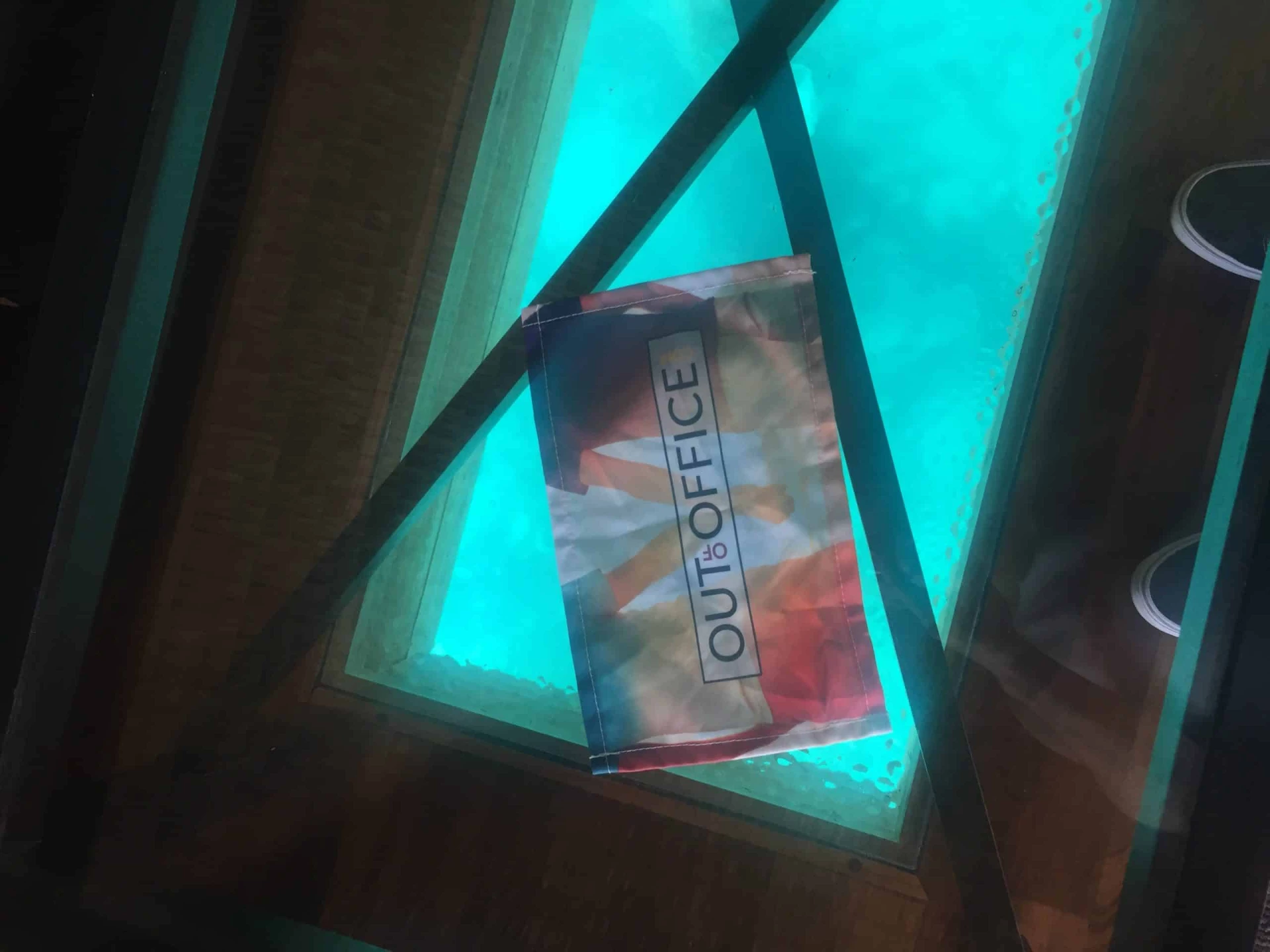
Exploring Rangiroa
Rangiroa is such a small island, you can easily get from top to bottom in a few hours – the width of the island is only around 300m! Most hotels and guest houses offer bicycles.
Rangiroa is not really a “beach destination”. There are some beautiful beaches in the Blue Lagoon which you can experience on a day trip. The main draw is the diving and marine life.
The food and drink are very similar to the rest of French Polynesia: very tasty and quite expensive! As the island is so isolated, most of the food has to be shipped in. Many traditional Polynesian dishes are heavily centred around seafood. A little tricky for me – I’m vegan, but the food sure looked divine. I stuck with rice and vegetables.
Gay Rights In French Polynesia
There’s no gay scene in French Polynesia but it’s very gay-friendly. The indigenous culture of the Polynesians has never been homophobic. As a French outpost, it is governed by French law, with a certain degree of administrative autonomy. Gay marriage is legal in French Polynesia – it’s one of the only places in the South Pacific where this is the case. You can get married and have your honeymoon in French Polynesia. When you get home your marriage will be legally recognised.

